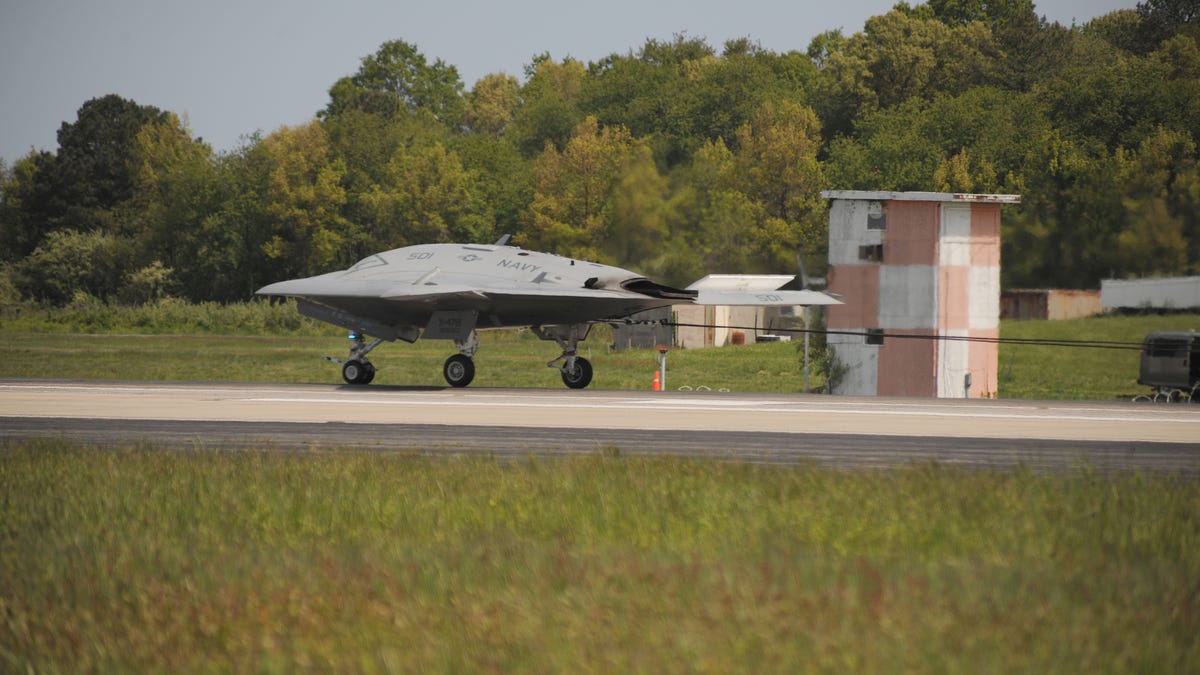Navy's X-47B makes first arrested landing
The autonomous aircraft's successful ability to grab a special cable upon landing sets it up for its first carrier tests later this month.

The U.S. Navy's X-47B is one step closer to being ready to start making test flights off of aircraft carriers after completing its first-ever arrested landing.
According to the Navy, the X-47B, also known as the Unmanned Combat Air System (UCAS), successfully grabbed hold of a special arrester cable with its tailhook, quickly stopping the aircraft during the May 4 test. That marked an important milestone in the development of the UCAS program.
The jet-powered X-47B is a prototype meant to fly autonomously, unlike many drones such as the Predator, which are usually flown remotely by ground-station-based pilots. The Navy said that the aircraft, though not intended for operational use, is part of a program geared toward the creation of other unmanned carrier-based aircraft programs.
The X-47B has a 62-foot wingspan and is shaped like a flying wing. It is 17 feet wider than the Navy's F/A-18 Super Hornet. It has a top speed in the "high subsonic" range, can reach a top altitude of 40,000 feet, and can fly about about 2,100 nautical miles.
The Navy said that the X-47B is now slated for sea-based carrier testing later this month, where it will be catapulted from the deck of the USS George H.W. Bush.
Last December, the aircraft completed its first-ever at-sea tests.

